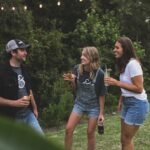
Depression is a common mental health disorder affecting millions of people worldwide.
According to the World Health Organization (WHO), more than 264 million people suffer from depression globally.
Traditional methods of diagnosing and treating depression include clinical interviews, questionnaires, and medication.
However, recent advancements in neuroscience have introduced a promising technique known as brain mapping, which could revolutionize how we understand and treat depression.
Can Brain Mapping Help Diagnose Depression?
Brain mapping is a technique that involves using various imaging technologies to visualize the structure and function of the brain.
This can include methods like functional magnetic resonance imaging (fMRI), electroencephalography (EEG), and magnetoencephalography (MEG).
These tools allow researchers and clinicians to see how different areas of the brain are functioning and interacting.
- Read also: Brain Mapping for Stroke: A Way for Diagnosis and Treatment
- Read also: Beyond the Scan: Brain Mapping for Epilepsy Patients

How Does Brain Mapping Work?
Functional MRI (fMRI)
fMRI measures brain activity by detecting changes in blood flow.
When a specific brain area is more active, it consumes more oxygen, and the fMRI can capture these changes, creating a detailed map of brain activity.
Electroencephalography (EEG)
EEG records electrical activity in the brain using electrodes placed on the scalp.
It is particularly useful for detecting changes in brain wave patterns, which can be associated with different mental states, including depression.
Magnetoencephalography (MEG)
MEG measures the magnetic fields produced by neural activity.
It provides real-time data on brain function and is often used in combination with other imaging techniques.
Identifying Biomarkers for Depression
Researchers have been using brain mapping to identify specific biomarkers associated with depression.
For instance, studies have found that individuals with depression often exhibit reduced activity in the prefrontal cortex and abnormal connectivity in neural networks related to mood regulation.
These biomarkers can help in diagnosing depression more accurately and tailoring treatment plans to individual needs.

Potential Applications of Brain Mapping for Depression Treatment
Brain mapping not only aids in diagnosing depression but also holds potential in developing more effective treatments.
By understanding the specific brain regions and networks involved in depression, clinicians can devise targeted therapies.
Personalized treatment plans
One of the most exciting uses of brain mapping is creating personalized treatment plans.
Traditional depression treatments, like antidepressants, don’t work the same way for everyone.
With brain mapping, doctors can see exactly which parts of the brain are affected in a specific person.
This means treatments can be tailored just for them.
For example, if a patient’s brain shows less activity in the prefrontal cortex, doctors might use transcranial magnetic stimulation (TMS) to target that area directly.
This personalized approach can be much more effective than standard treatments.
Enhancing existing therapies
Brain mapping can also improve the therapies we already use.
Cognitive-behavioral therapy (CBT) is a common treatment for depression.
When we combine CBT with brain mapping, therapists can see how the brain changes during treatment.
This real-time information lets them adjust their methods to better fit the patient’s needs, making the therapy more effective.
Development of new therapies
Understanding the brain’s role in depression can lead to new treatments.
Researchers are looking into techniques like neuromodulation, which involves directly stimulating parts of the brain to control abnormal activity.
One promising method is deep brain stimulation (DBS), where electrodes are implanted in the brain to help manage depression symptoms.
This could be especially helpful for patients who haven’t responded well to other treatments.

What are the Limitations and Considerations?
While brain mapping offers significant promise in understanding and treating depression, it’s important to recognize its limitations and challenges.
Here are some key factors to consider:
Cost and accessibility
Brain mapping technologies, like functional Magnetic Resonance Imaging (fMRI) and Magnetoencephalography (MEG), are very expensive.
These machines can cost millions of dollars and running them requires additional funds.
This high cost means that many hospitals and clinics, especially those in low-resource areas, can’t afford to have them.
As a result, brain mapping might not be available to everyone who could benefit from it.
Making these technologies more affordable and accessible is a major challenge that needs to be addressed.
Complexity of data interpretation
The data produced by brain mapping is incredibly complex.
Understanding it requires specialized knowledge and expertise.
The brain is one of the most complicated organs in the body, and deciphering the significance of the data can be very challenging.
To use brain mapping effectively and accurately, standardized protocols and training programs are essential.
This means training more professionals who can interpret the data correctly and consistently.
Ethical considerations
There are also important ethical issues to consider with brain mapping.
Using neuroimaging techniques involves collecting very sensitive data about a person’s brain activity.
This raises concerns about privacy and the potential misuse of this information.
For instance, without proper regulations, there could be risks of data being used inappropriately or without consent.
Therefore, establishing strict ethical guidelines and regulations is crucial to protect individuals’ rights and ensure that brain mapping is used responsibly and ethically.

- Read also: Brain Mapping for Dementia: What You Need to Know
- Read also: Flexible Thinking Is Required to Overcome Depression
Conclusion
Brain mapping represents a significant advancement in the field of neuroscience and holds great potential for improving the diagnosis and treatment of depression.
By providing detailed insights into the brain’s structure and function, brain mapping can lead to more personalized and effective treatment plans.
However, it is essential to address the limitations and ethical considerations associated with this technology to ensure its responsible use.


